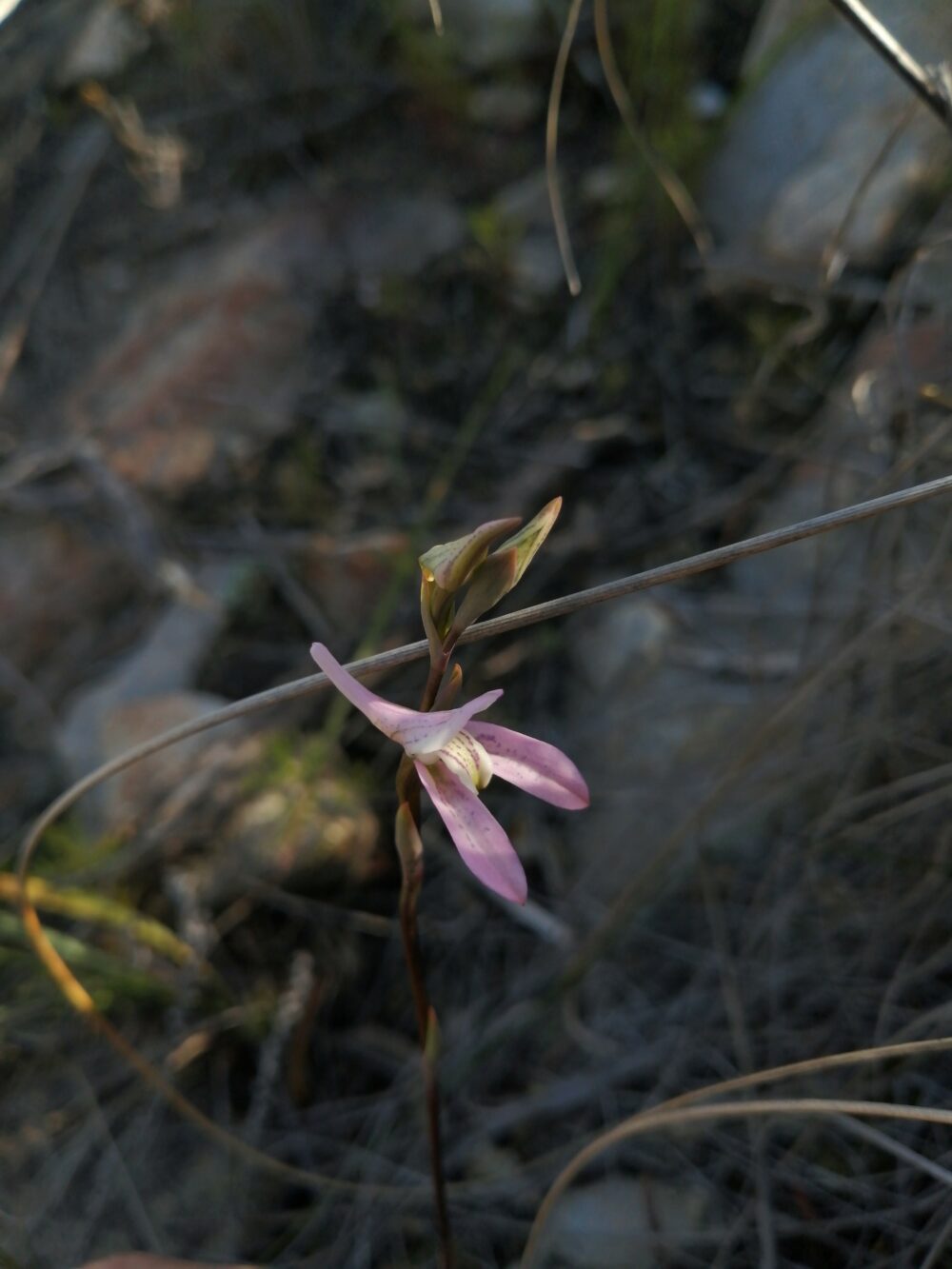
Disa bifida
kapotjie
Tuberous geophyte (30 cm). Wiry stem. Paddle-shaped leaves form a basal rosette. Pink flowers (September to October) in a raceme; sepals paddle-shaped (1 to 1.5 cm); spur upcurved (1 to 1.3 cm); lip tip green to purple.
The three prominent “petals” characteristic of Disa species are actually sepals that form part of the calyx (cup-like outer whorl of a flower). Disa species do have three true petals as well, the top two forming a cup-shaped enclosure above the stigma and the lower petal known as the “lip”.
Distribution in the Hex
Sandy flats or lower slopes in De Doorns Sandstone Fynbos.
References
- Manning, J. & Goldblatt, P. 2012. Plants of the Greater Cape Floristic Region 1: the Core Cape flora, Strelitzia 29. South African National Biodiversity Institute, Pretoria.